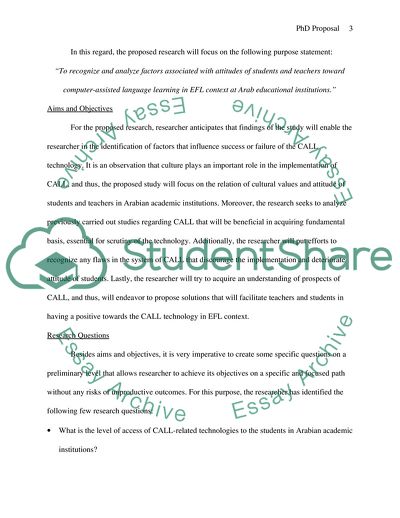Cite this document
(Attitudes of Students and Teachers Towards Computer-Assisted Language Learning Research Proposal Example | Topics and Well Written Essays - 1250 words, n.d.)
Attitudes of Students and Teachers Towards Computer-Assisted Language Learning Research Proposal Example | Topics and Well Written Essays - 1250 words. https://studentshare.org/education/1730142-a-phd-research-proposal
Attitudes of Students and Teachers Towards Computer-Assisted Language Learning Research Proposal Example | Topics and Well Written Essays - 1250 words. https://studentshare.org/education/1730142-a-phd-research-proposal
(Attitudes of Students and Teachers Towards Computer-Assisted Language Learning Research Proposal Example | Topics and Well Written Essays - 1250 Words)
Attitudes of Students and Teachers Towards Computer-Assisted Language Learning Research Proposal Example | Topics and Well Written Essays - 1250 Words. https://studentshare.org/education/1730142-a-phd-research-proposal.
Attitudes of Students and Teachers Towards Computer-Assisted Language Learning Research Proposal Example | Topics and Well Written Essays - 1250 Words. https://studentshare.org/education/1730142-a-phd-research-proposal.
“Attitudes of Students and Teachers Towards Computer-Assisted Language Learning Research Proposal Example | Topics and Well Written Essays - 1250 Words”. https://studentshare.org/education/1730142-a-phd-research-proposal.


